Light treatment is the new way dermatologists are treating acne patients
FOR years Natalie dealt with severe cystic acne and says it ruined her confidence and self esteem, until she tried a new light treatment that’s hit the market.
GROWING up, Natalie Walker was one of those lucky teenagers who managed to avoid the agonising skin battles most adolescents face.
But just as she thought she was over the hill, and moved to Sydney from the UK, the change in climate began to upset her clear complexion. The occasional spot soon turned into aggressive cystic acne.
“It made me feel horrific. I ended up being on the brink of depression,” Ms Walker, 27, told news.com.au.
“I didn’t want to go to work, I cancelled dinners with friends and nights out because I couldn’t hide the spots. I became a lot more introverted and I was really upset all the time,” Ms Walker said.
“I started wearing more makeup and that probably contributed to making it worse. I always felt that people saw my spots and nothing else. I just had really low self esteem and ended up just not wanting to get out of bed in the morning.”


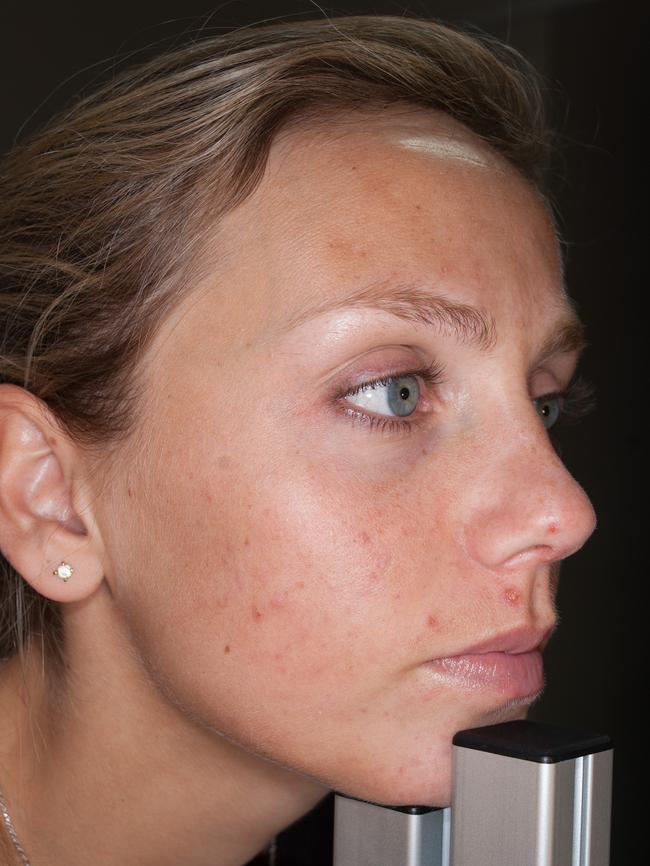

She tried topical creams and was prescribed Ruaccutane, a popular acne medication, but was deterred by the common side effects - some patients report dry, flaky skin and a change in mood.
Instead, her dermatologist suggested a new light-based acne treatment called Kleresca.
Killing acne with light is not entirely revolutionary - it works by targeting the acne-producing bacteria beneath the skin, killing off the bad stuff and reducing inflammation - but Kleresca is different to traditional blue and red light treatments.
An orange gel is applied to the skin and the patient sits under a strong light for nine minutes. The gel activates the light wavelengths which penetrate the skin and the oil-producing cells that are working overtime. Dermatologists recommend patients undergo two treatments a week for six weeks, at $200 each, adding to a total of $2400.
“The way it interacts with the skin makes it very effective at turning off that inflammation and targeting bacteria,” said Ms Walker’s dermatologist Dr John Sullivan, a member of the Australasian College of Dermatologists and a senior lecturer at the University of New South Wales.

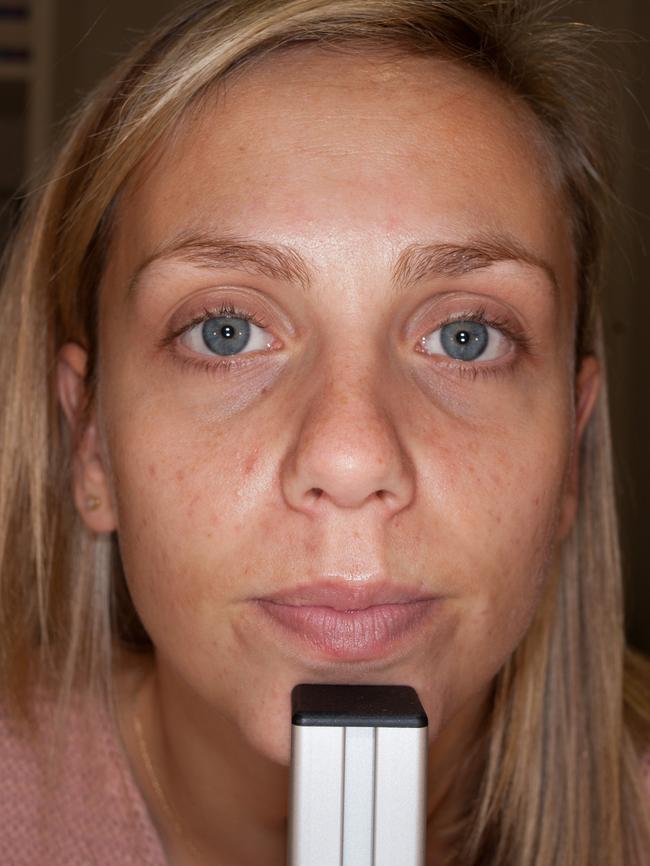
“If you put your hand underneath the light, it does get really warm during the treatment, but it’s not unpleasant,” Dr Sullivan said.
“Sometimes when the gel goes on, if someone has irritated skin it can sting and usually patients are a bit warm and red afterwards.”
Ms Walker describes the feeling post-treatment as though she’d been lying in the sun at the beach for a little longer than she should have been.
“It feels as though you’re a tiny bit sunburnt and your face starts to feel a little bit warm. I ended up falling asleep almost every time,” she said.
Kleresca works best on severe, “angry” acne, Dr Sullivan said, because after six weeks of treatment the skin becomes clear enough to then simply treat with topical creams and a strict cleansing routine.
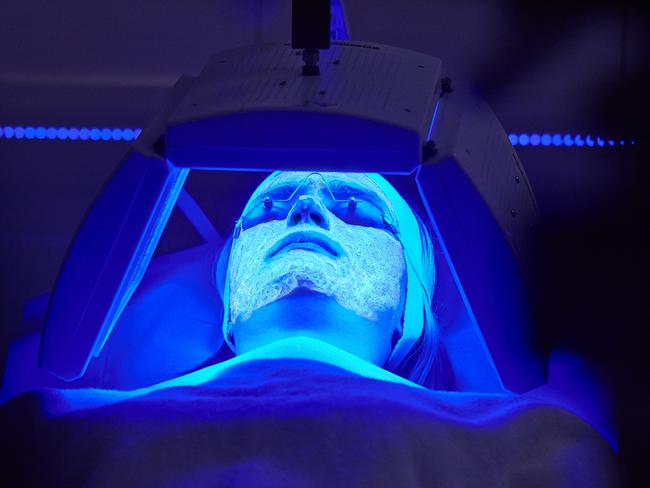
For those concerned about redness, he says the light used is not UV light, the kind which causes sunburn and ageing.
“Inflammatory acne seems to settle most quickly with light treatment. There is no damage and those wavelengths can actually trigger new collagen and repair and are quite calming on the skin,” he said.
Ms Walker said she started to notice a difference in her skin after two weeks of Kleresca treatments.
“The spots weren’t as angry and red. Now I do get the occasional few spots in those target areas, but no acne has come back to the point where it’s something I can’t deal with,” she said.
“The thing I liked about the treatment is there was little down time. After the first treatment my face was quite red, but by the end you couldn’t tell I’d been in. It probably looked like I’d been for a run.”
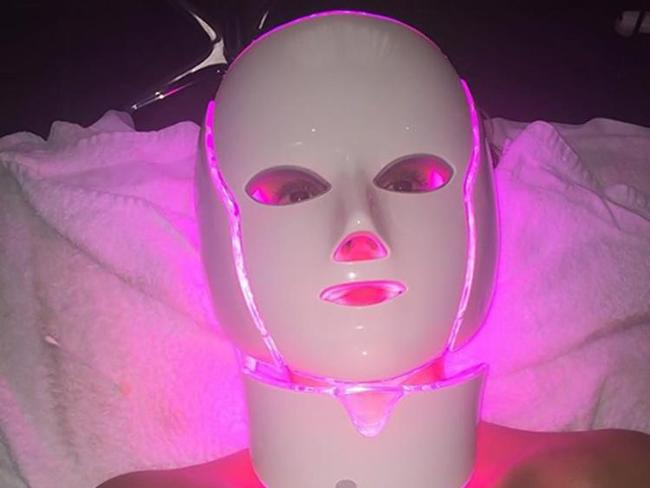
While Ms Walker underwent treatment in a dermatology clinic, at-home light treatments have become popular overseas. It’s a trend tailor made for social media - celebrities such as Jessica Alba and Kourtney Kardashian have shared selfies of their glowing, Daft Punk-esque night-time beauty routines on Instagram and Snapchat.
There are lots of different types of at-home light treatments that address a variety of concerns, though they’re yet to take off in Australia.
Some, like Neutrogena’s Light Therapy Acne Mask, $US35, are more accessible than the fancy celeb-endorsed lights (a Neutrogena spokeswoman told news.com.au there were no immediate plans to launch the mask in Australia). The mask Alba used, the OPERA LED Face Mask, retails for £1900 or $AU3090 and is sold online.
“The hand held or lamp devices have been freely available and popular only in the past two to five years. In clinical therapy they’ve been available for 10 years or more,” said Australasian College of Dermatologists spokeswoman Dr Jo-ann See.
“Light therapy, usually administered with at-home devices is normally performed twice per day, and uses blue and sometimes blue and red light,” Dr See said.
“Blue light kills the acne-causing bacteria known as Propionibacterium acnes, or P acnes, which can cause inflammation. P acnes are sensitive to blue light. Using the blue light eliminates the bacteria found in the oil glands in the skin.
“Some light systems also cause the oil glands to shrink in size. The result is less oil in the skin and less bacteria, leading to the resolution of acne in the treated areas.”
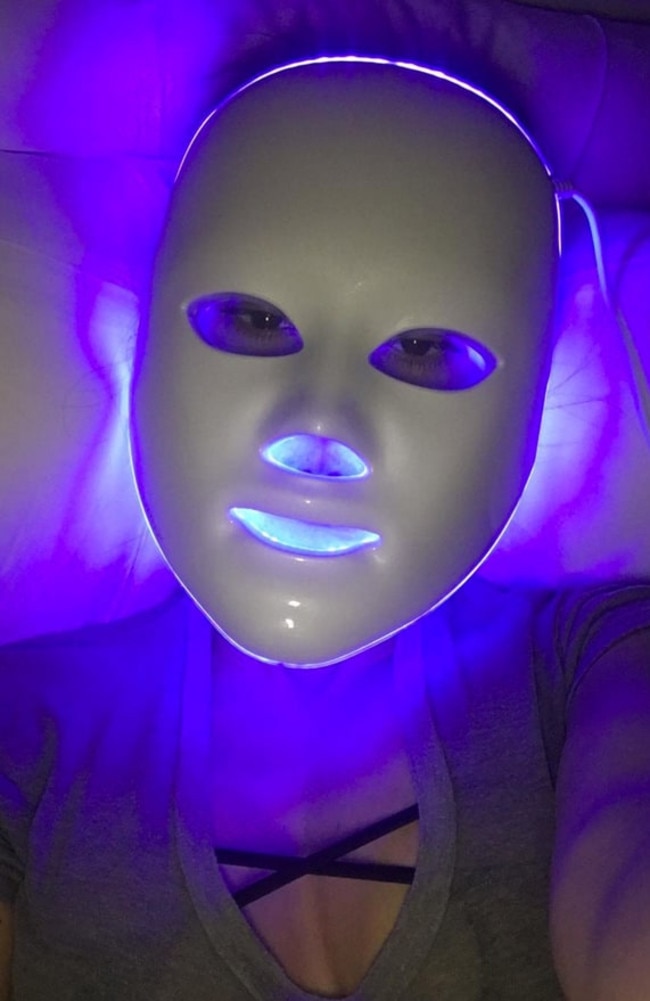
Ms Walker’s boyfriend proposed to her last year, but she’d always known that she wouldn’t be happy walking down the aisle with her severe acne.
“I wouldn’t have been comfortable on my wedding day with the way I looked. It wouldn’t have been me that he was marrying, it would have been someone else, but now I can’t wait for the wedding day,” she said.
“I’m back to being my outgoing, normal self, playing sports and going out as much as possible. Now when you do get a spot or two, it puts it in perspective.
“I think, ‘Oh I’ve got two spots? Great, I’ll just cover them up’. I can go back to being myself again.”
rebecca.sullivan@news.com.au

